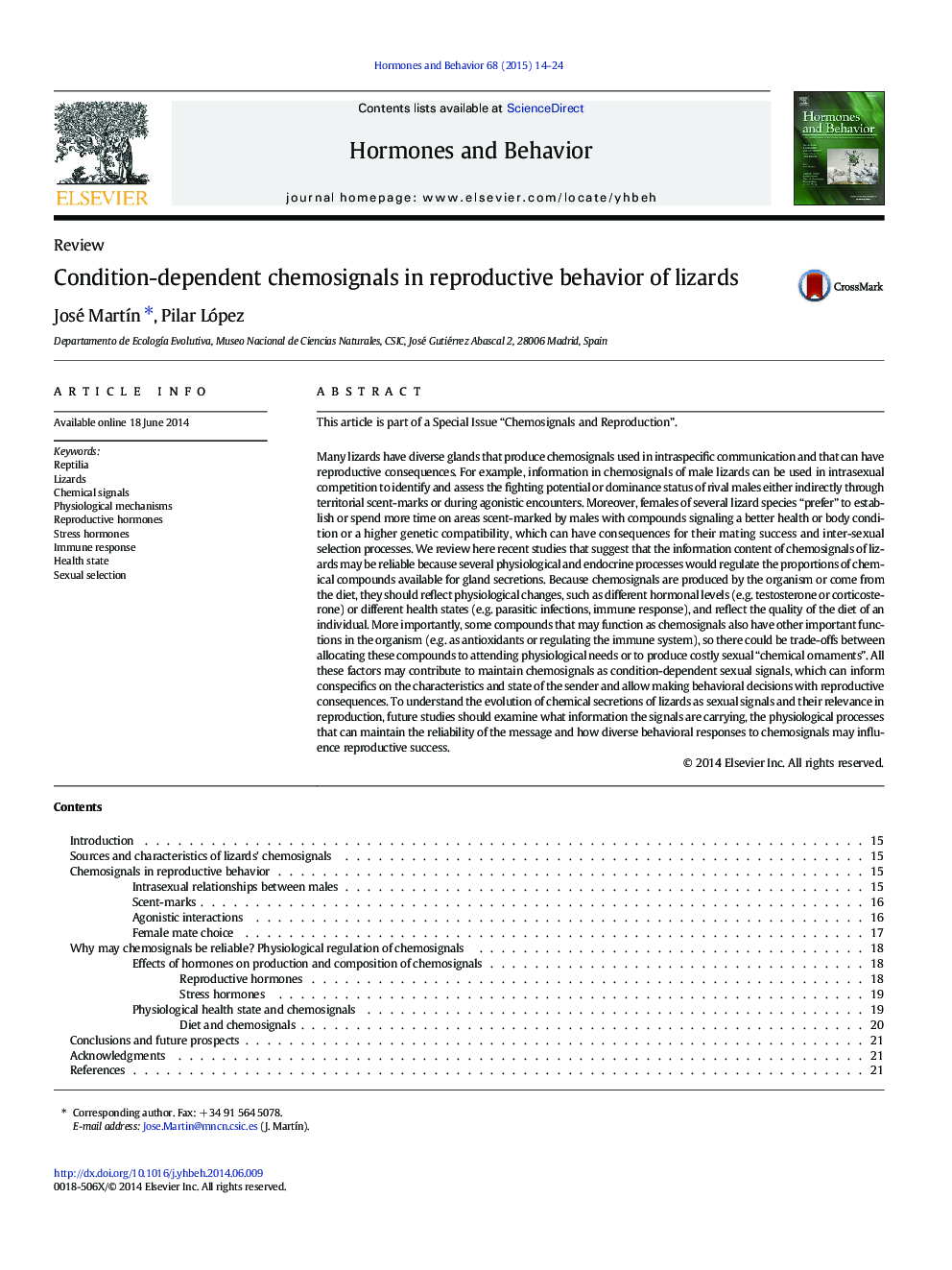| کد مقاله | کد نشریه | سال انتشار | مقاله انگلیسی | نسخه تمام متن |
|---|---|---|---|---|
| 323399 | 540641 | 2015 | 11 صفحه PDF | دانلود رایگان |

• We review how information of lizards' chemosignals may be reliable.
• Chemosignals allow lizards to take behavioral decisions with reproductive consequences.
• Physiological and endocrine processes may regulate compounds available for secretions.
• Several factors may maintain chemosignals as condition-dependent sexual signals.
This article is part of a Special Issue “Chemosignals and Reproduction”.Many lizards have diverse glands that produce chemosignals used in intraspecific communication and that can have reproductive consequences. For example, information in chemosignals of male lizards can be used in intrasexual competition to identify and assess the fighting potential or dominance status of rival males either indirectly through territorial scent-marks or during agonistic encounters. Moreover, females of several lizard species “prefer” to establish or spend more time on areas scent-marked by males with compounds signaling a better health or body condition or a higher genetic compatibility, which can have consequences for their mating success and inter-sexual selection processes. We review here recent studies that suggest that the information content of chemosignals of lizards may be reliable because several physiological and endocrine processes would regulate the proportions of chemical compounds available for gland secretions. Because chemosignals are produced by the organism or come from the diet, they should reflect physiological changes, such as different hormonal levels (e.g. testosterone or corticosterone) or different health states (e.g. parasitic infections, immune response), and reflect the quality of the diet of an individual. More importantly, some compounds that may function as chemosignals also have other important functions in the organism (e.g. as antioxidants or regulating the immune system), so there could be trade-offs between allocating these compounds to attending physiological needs or to produce costly sexual “chemical ornaments”. All these factors may contribute to maintain chemosignals as condition-dependent sexual signals, which can inform conspecifics on the characteristics and state of the sender and allow making behavioral decisions with reproductive consequences. To understand the evolution of chemical secretions of lizards as sexual signals and their relevance in reproduction, future studies should examine what information the signals are carrying, the physiological processes that can maintain the reliability of the message and how diverse behavioral responses to chemosignals may influence reproductive success.
Journal: Hormones and Behavior - Volume 68, February 2015, Pages 14–24